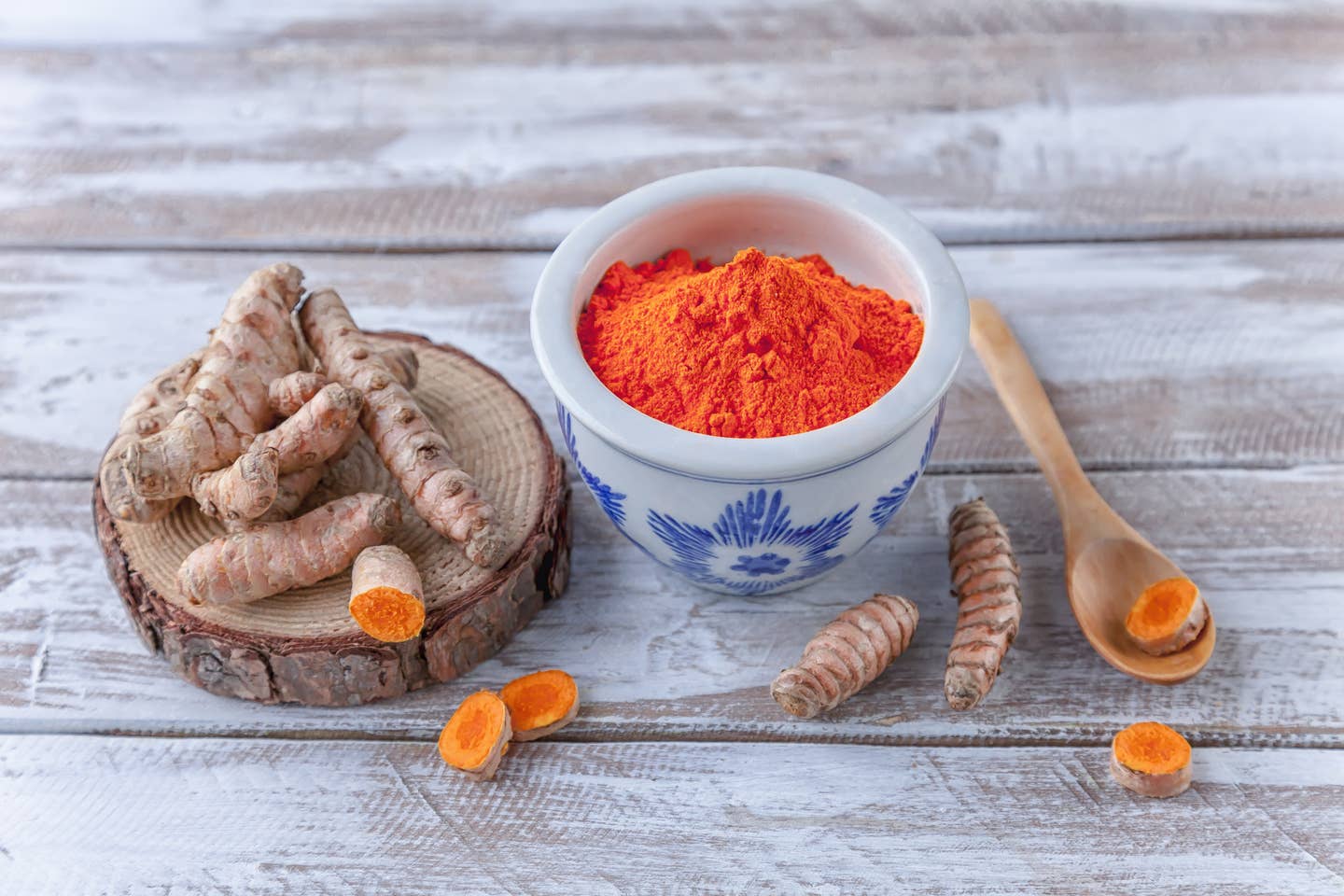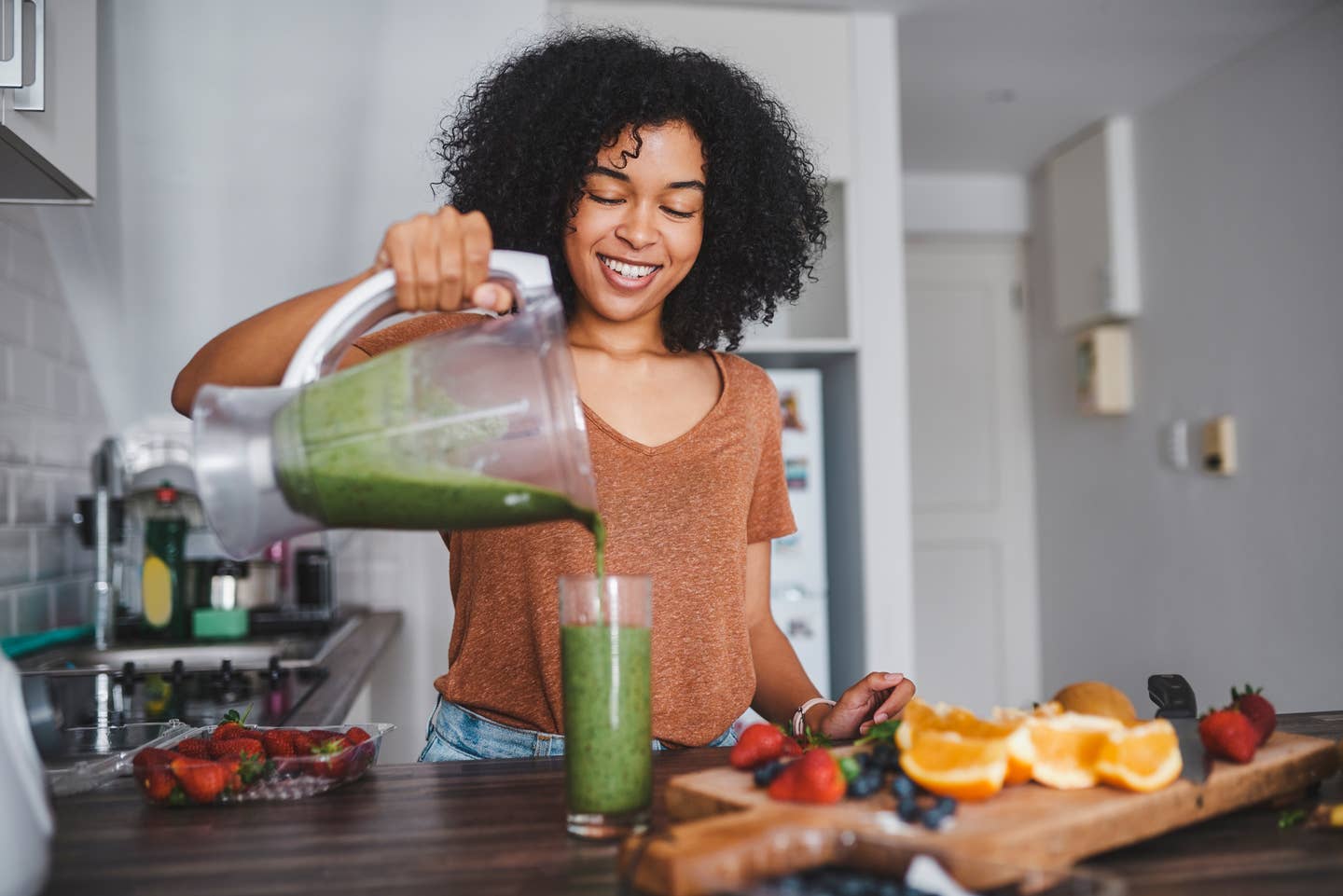
Eat to Fight Inflammation, Lower Risk of Disease and Prevent Infection
When we stub our toe or injure ourselves, the first sign that the pain will hit is swelling, the acute mobilization of blood cells to the injury site to both heal and protect it by our body's own white blood cells. It lasts a few days and subsides as our own healing powers kick in.
But what if we told you that inflammation can also be a cause of harm in the body, not jus the effect? A new and building school of research has doctors believing that inflammation is to blame for diseases, aging, lack of mobility and overall compromised healthy cell function, and if you can fight inflammation, you can fight disease. This is not the acute type (brought on by an injury) but the chronic type. It is a more insidious and dangerous type of inflammation that occurs in our bodies that is now thought to be one of the most unhealthy functions our bodies can endure: Chronic inflammation. The type that exists throughout the body, lasts longer than a few hours or days, and causes the gradual shut down of healthy cell function, leading to disease.
Chronic inflammation is a situation where your body is constantly inflamed, reacting to a chronic assault (smoking, chemicals, or other offending agents) and the result is that your blood vessels are unable to provide the healthy exchange of oxygen and nutrients to your organs that allow for healthy mobility and function. Think of it as living under a pile of cushions, not just for a minute but for days. You'd feel suffocated.
Inflammation can cause changes in our cells' DNA, which can elevate risks of cancer, as well as Alzheimer's and auto-immune diseases where the body attacks its own healthy cells. It appears to also play a role in heart disease, and other signs of aging. That's the bad news. The good news? There are ways to lower your body's inflammation levels naturally and reduce the health risks that are associated with it. One way is to quit smoking. (Let's hope you got that memo.) The other is with daily doses of strenuous, healthy exercise, and the third is by choosing a diet rich in vegetables, fruits, grains, nuts, seeds, and filling your plate with high-fiber, nutrient-dense foods, according to Harvard School of Health.
According to the Harvard Medical Schol Journal, "Many major diseases that plague us—including cancer, heart disease, diabetes, arthritis, depression, and Alzheimer's—have been linked to chronic inflammation." But there's also what they call the Anti-Inflammation Diet, and this is how everyone should eat, even if you don't have a chronic condition, because anti-inflammation is also anti-aging, and we all want a dose of that.
Here’s how you can choose anti-inflammatory foods, and avoid those that cause it. No surprise, this is accomplished through a mostly plant-based diet!
First, the Foods to Avoid, That Are Known to Promote Inflammation:
High glycemic index (GI) foods – like refined carbohydrates or excess simple carbohydrates - increase blood glucose and insulin levels, which can actually lead to inflammation. However, complex carbohydrates (think of whole grains like quinoa) have the opposite effect. Let’s get one thing straight: Not all carbs are equal, especially if you’re following a plant-based diet.
Before we dive into the specific foods that promote inflammation, let’s talk about grains, beans, and legumes. Grains can be tricky. But here’s how you can avoid confusion – any grain that isn’t in its natural state as a single-ingredient food (wild rice, for instance) will most likely promote some level of inflammation: Cereal, store-bought bread, and white rice.
Sorry but that means staying away from some of your "comfort carbs" like, pizza crust, pasta, white bread, tortilla wraps, and cereals, which all promote inflammation. Even if a product is made from whole grains, the process that takes the grain from a single ingredient food to a consumable product often means there are unnecessary ingredients added or methods used to get them into that state. When in doubt, just buy the grain in its most natural form.
The second thing that you have to be mindful of is how you prepare grains as well as beans and legumes. If beans tend to upset your stomach, try soaking them over a 24 hour period in filtered water with a splash of acid (like lemon juice or apple cider vinegar) to make them easier to digest. Click here for our complete guide to soaking and sprouting beans.
Here’s the list of foods that can cause inflammation:
- Wheat
- Processed grains
- Tree nuts and peanuts
- Soy
- Processed and added sugar
- Dairy
- Animal protein
- Artificial flavors and colors
- Vegetable oils high in linoleic acid: Soybean oil, canola, safflower oil, and sunflower oil
- Sodas
- Meat and Processed Meat
One habit that can actually boost inflammation is If you eat the same foods day after day, don’t be surprised if your body starts to feel inflamed or bloated. You can solve this by rotating your go-to foods every other day or every other week.
Foods that Fight Inflammation, according to the latest research:
For foods that are anti-inflammatory, the closer you get to foods you could grow, the better. So choose whole foods that are plant-based and high in fiber, rich in antioxidants, and long on phytochemicals. Choose low acid-forming foods and low glycemic foods! For a list of those, we've broken them into helpful food groups:
Only Choose Complex Carbohydrates, or Un-Processed Starches:
- Quinoa (soaked)
- Certified gluten-free oatmeal
- Colored rice, either brown or wild
- Sweet potatoes
- Sourdough bread
- Sprouted bread (bread containing yeast can cause inflammation)
Seek Out Whole-Grains, Vegetables and Legumes, for Plant-Based Protein:
- Properly prepared beans and legumes
- Lentils, garbanzo beans, black beans
- Grains, quinoa, farro
- Dark Leafy Greens and Green Vegetables
- Swiss Chard
- Kale
- Arugula
- Spinach
- Collard greens
- Bok choy
Eat as Many Colorful Fruits and Vegetables as You Can:
These contain antioxidants, micronutrients, and phytochemicals, the darker, richer or brighter the more nutrient-dense. Aim for 9 servings per day!
- Berries, strawberries, blueberries, blackberries, cranberries, cherries
- Beets
- Mushrooms
- Onions
- Citrus fruits, lemons, limes, grapefruit, kiwi, papaya, mango
- Cruciferous veggies – broccoli, Brussels, cauliflower
One exception: Nightshades like eggplant are bright in color but may cause inflammation in some people, so be mindful if you have found that you are sensitive to these. They include tomatoes, peppers regular potatoes, eggplant, etc.
Eat Plenty of Healthy Fats, Rich in Omega-3
- Olives
- Cold-pressed, unrefined oils: Coconut oil, avocado oil, and olive oil
- Seeds, hemp, chia, pumpkin, flax
- Nuts and nut butter, Brazil nuts, walnut, pecan, macadamia, nuts
- Coconut butter
- Unsweetened coconut milk or yogurt
- Avocado
- Fermented Foods
- Kimchi and Sauerkraut (these can be high in sodium)
- Miso, either soy or chickpea-based
- Tempeh, rice-based
Add These Healthy Herbs and Spices to Your Daily Diet in Generous Doses
- Turmeric
- Ginger
- Garlic
- Cinnamon
- Mint
- Basil
- Oregano
- Cayenne
- Clove
- Drinks
- Herbal or green tea
- Unsweetened coconut water
- Water kefir
Here are some herbal, anti-inflammatory beverages for you to try. Enjoy!
The Best Ant-Inflammatory Juice Recipe:
Ingredients
- ¼ tsp ginger powder or fresh ginger
- ¼ tsp cinnamon
- 1 tsp turmeric
- Juice of ½ lemon
- 1 tbsp maple syrup or honey
- 1 cup water or
- 1 cup celery juice
- For a kick and to absorb your turmeric, add a pinch of black pepper
Instructions
- Add celery, lemon, ginger, and water together in blender or juicer
- Add rest of ingredients to a cup, then pour celery, ginger and lemon juice on top
- Mix until well-combined.
- You can use either an electric handheld mixer, juicer, or blender.
- Pour and serve over ice
Herbal Tee’cino
Ingredients
- 1 Teecino tea bag with a dandelion in the ingredients (I love the caramel nut)
- *This herbal coffee replacement is great for liver detoxing!
- 1-2 tbsp vegan collagen or vanilla plant protein
- 1 cup water
- Splash of non-dairy milk
- Sweetener of choice: stevia, maple syrup, honey
Instructions
- Heat liquid in saucepan until lightly boiling
- Add liquid to the mug and steep tea bag according to instructions
- If you buy the coffee bag, steep according to instructions
- Add a splash of milk and sweetener of choice (1 tsp) or stevia
More From The Beet






